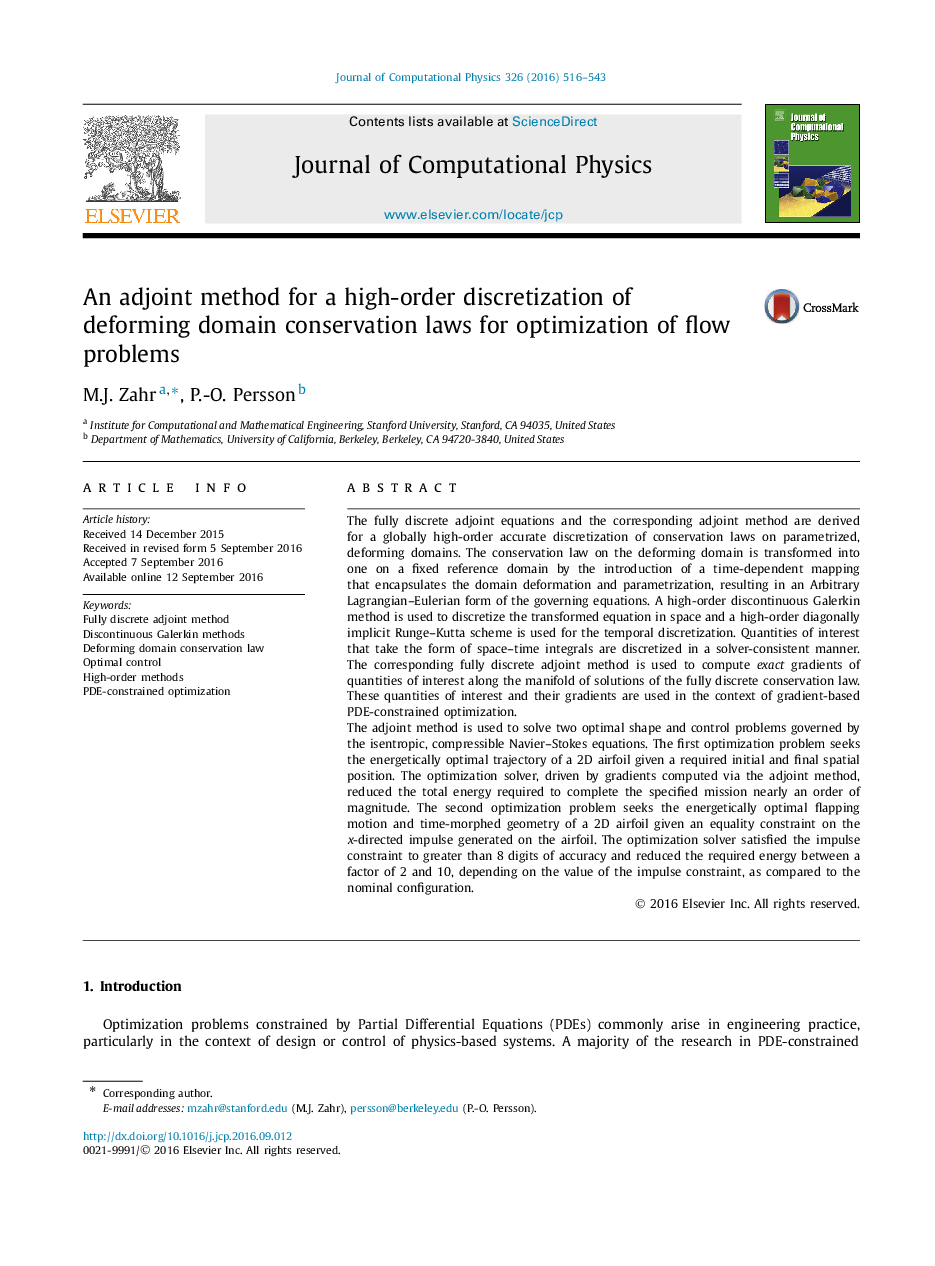| Article ID | Journal | Published Year | Pages | File Type |
|---|---|---|---|---|
| 4967868 | Journal of Computational Physics | 2016 | 28 Pages |
Abstract
The adjoint method is used to solve two optimal shape and control problems governed by the isentropic, compressible Navier-Stokes equations. The first optimization problem seeks the energetically optimal trajectory of a 2D airfoil given a required initial and final spatial position. The optimization solver, driven by gradients computed via the adjoint method, reduced the total energy required to complete the specified mission nearly an order of magnitude. The second optimization problem seeks the energetically optimal flapping motion and time-morphed geometry of a 2D airfoil given an equality constraint on the x-directed impulse generated on the airfoil. The optimization solver satisfied the impulse constraint to greater than 8 digits of accuracy and reduced the required energy between a factor of 2 and 10, depending on the value of the impulse constraint, as compared to the nominal configuration.
Keywords
Related Topics
Physical Sciences and Engineering
Computer Science
Computer Science Applications
Authors
M.J. Zahr, P.-O. Persson,
